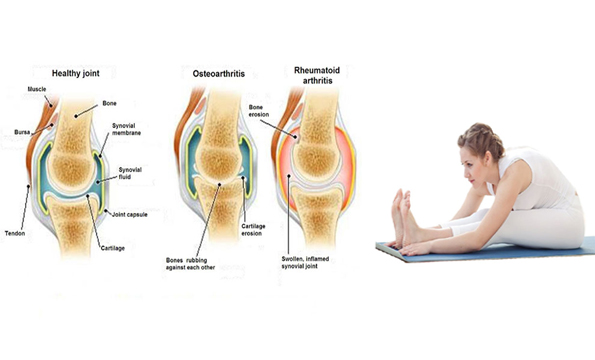Pain in the joints is a common problem which may vary from a minor discomfort to a disabling chronic problem affecting the quality of life to a great extent. The biomedical inventions have given great mobility and functional ability for damaged joints. It is not unusual to find persons with 10 to 20 joints (small and big) replaced as and when the joints get damaged, which has helped them to live their lives in comfort. Thanks to fascinating advances in medication too, which has definitely saved an arthritic from the devastating side effects of steroids. But, have we hit the nail on its head? Have we been able to cure or prevent joint diseases? The answer is a clear ‘No’. Increasing problems of aging changes in the joints are expected as our life expectancy and longevity have increased all round the globe. But what about the other types of arthritidis which are hitting younger persons? Rheumatoid arthritis, a Issuesof temperate climates, is still an enigma as we have not been able to remove the root cause of the disease.
SPECIAL TECHNIQUES
Passive Rotation of Toes Sthiti: Daïãásana or sitting in a chair.PRACTICE
- Bend the right leg at the knee, place the right foot on the left thigh.
- Move the individual toes with the left hand (i.e., passive movement) bending them forward & backward, right & left followed by clockwise and anti- clockwise rotation five times each.
- Then hold all the toes with the left-hand, rotate and bend them forward and backward 5 to 10 rounds.
- Repeat the same practice with the left foot.
- While practicing with individual toes, pull them outwards with the hand before moving them.
- If necessary, the instructor does the passive movement for the patient.
SPECIAL TECHNIQUES ANKLE ROTATION
Sthiti: DaïãásanaPRACTICE
- Separate the legs by about a foot.
- Bring the awareness to both feet.
- Slowly rotate both feet from the ankles together in opposite directions.
- The big toes touch each other on the inward stroke of each foot.
- Repeat 10 rounds.
- Change directions and repeat 10 rounds.
- Practice with normal breathing.
- Keep the heels in contact with the ground throughout the practice.
- Do not allow the knees to bend.
- This can also be done sitting in a chair or cot keeping the knees straight.
Disclaimer
Yoga Ayurveda Therapy is Complementary Medicine and doesn't alternates any conventional treatment.
Yoga-Ayurveda Therapy needs physical assistance which may need physical touch. You can ask teacher or therapist not to give physical touch or assistance and based on whatever you choose, our teacher or therapist will follow the instructions. Any point you want to change the preference, then please inform teacher or therapist and management in writing. You will take responsibility of your decision and will not hold Union Yoga Ayurveda responsible for any kind of damage.
All kind of Yoga Ayurveda teaching and therapy can cause certain injuries and you are accepting those injuries. Signing up for the therapy or yoga courses means that you are aware of the probable injuries.
Union Yoga Ayurveda (Union Centre Pte Ltd) and its staff are not liable or responsible for any injuries caused during the session which are visible or not visible, physical or hormonal or mental. You as client take full responsibility of your own decision and will not claim any kind of compensation in terms of money or any resources for the damage caused because of due process.
Prev Post


